Way back in 2013, Stonemaier Games published a worker placement game called Euphoria: Build a Better Dystopia. Fast-forward six years and they released an expansion called Ignorance is Bliss. Here’s what happens when you put them together.
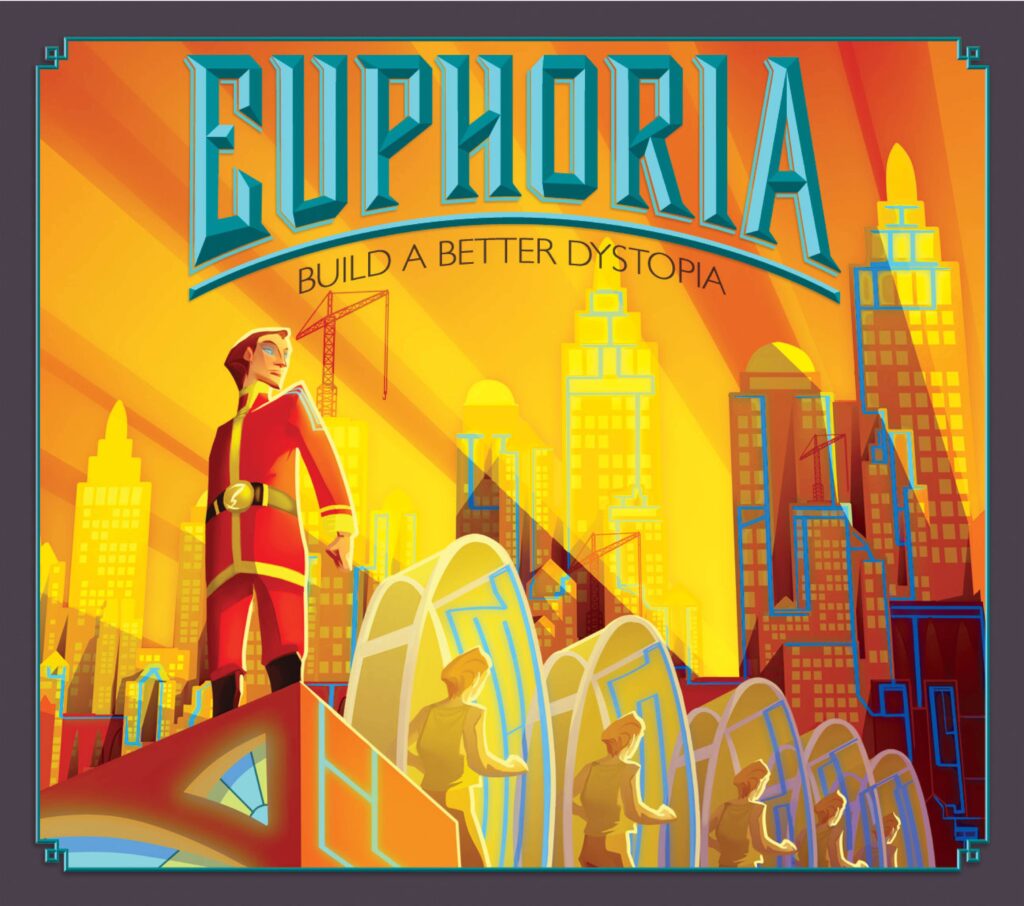
Designer: Jamey Stegmaier, Alan Stone
Publisher: Stonemaier Games
Art: Jacqui Davis
Players: 1-6
Playing time: 60-75minutes
Introduction
Euphoria: Build a Better Dystopia is a game that pretty much defines itself. Through placing workers, players build their faction’s influence in this crazy world-gone-to-poop, trying to be the first to completely stamp their authority.
I mostly write about more recent games here, but the chance to take a look at Euphoria, combined with its expansion was one I couldn’t pass up. When the base game was released eight years ago, it found a lot of fans. Its quirky styling and sense of humour, and the unique way it used dice as workers were fresh and interesting. It’s also still one of the only worker-placement games I’ve played that’ll accommodate up to six players.
So how do you make it better? Well, there were a lot of variants and house rules being posted in places like BoardGameGeek which players found balanced the game better, and so some of those have been implemented into the base game rules with the expansion. It also brought a whole raft of new market tiles to the game, along with a load of new recruits, to keep the original game fresh. There’s also a new market mechanism for claiming artifact cards, and some player mats.

The other huge thing the expansion did, however, was to add a solo mode. Morten Monrad Pedersen’s Automa Factory came back to work with Stonemaier Games, and to give us a whole new way to play.
What’s In The Box
I’ve got the third printing of the base game, and it has the lovely, lovely insert and token holders from Game Trayz (the same people who made the insert I loved in PARKS). If there’s a better insert system for a game, I don’t know what it is, I haven’t seen anything better. It also had the added bonus of letting me add all the now-redundant baggies to my baggie box (don’t pretend you don’t have one).
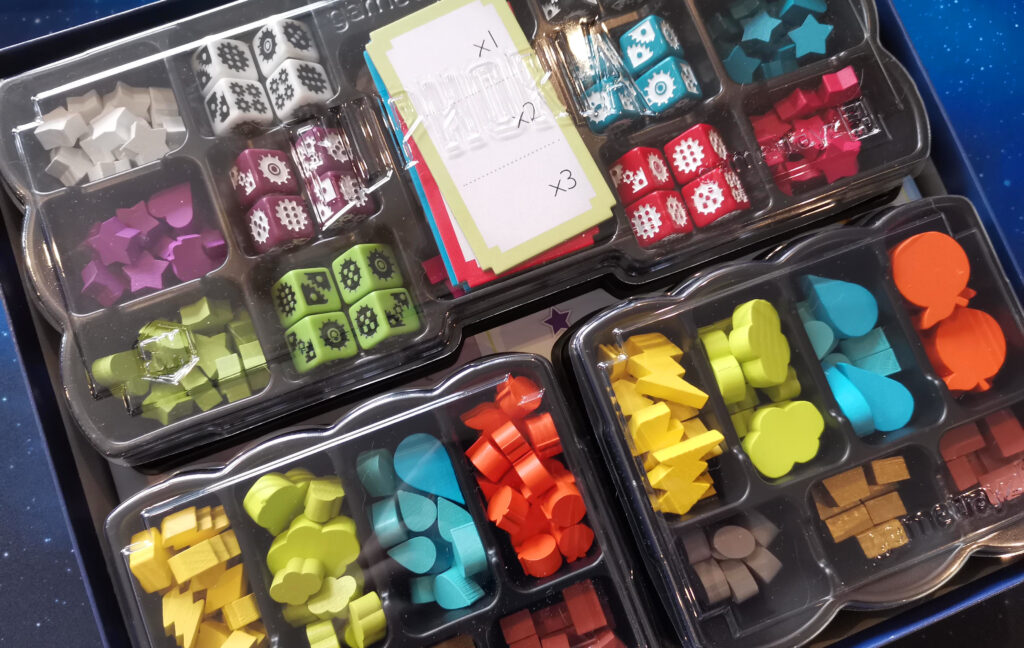
The components in this game are pretty top-notch. There are custom dice in all six player colours, and a full set of individual components. Resources are all custom wooden tokens in the shape of oranges, lightning bolts, green ‘bliss’ clouds and more. The market tiles are all really solid, nicely-finished cardstock, and the cards themselves are the usual Stonemaier high quality you’d expect by now. Everything feels really nice in-hand.
Another nice bonus of the insert is that it was designed with the expansion in mind. You can easily get the base game and every part of the expansion into the box, with everything separate to make setup simple. The expansion also comes with some stickers to place on the mine tracks on the main board, which give new starting places based on player count. This is another of the quality of life improvements.
I want to give a special mention to the theme and aesthetic. The tongue-in-cheek dystopia you’re building is really nicely illustrated, and really funny too, the name of some of the market tiles made me laugh out loud – The Lounge of Opulent Frugality for example.
How Does It Play?
At its heart, Euphoria is a worker-placement game, using dice as workers, in a similar way to Teotihuacan. There isn’t a set number of rounds before the game ends, instead it’s a race to get your authority markers (stars) off your player board and onto the main board. In a way that we later saw in Scythe, the first one to place all their stars, wins.
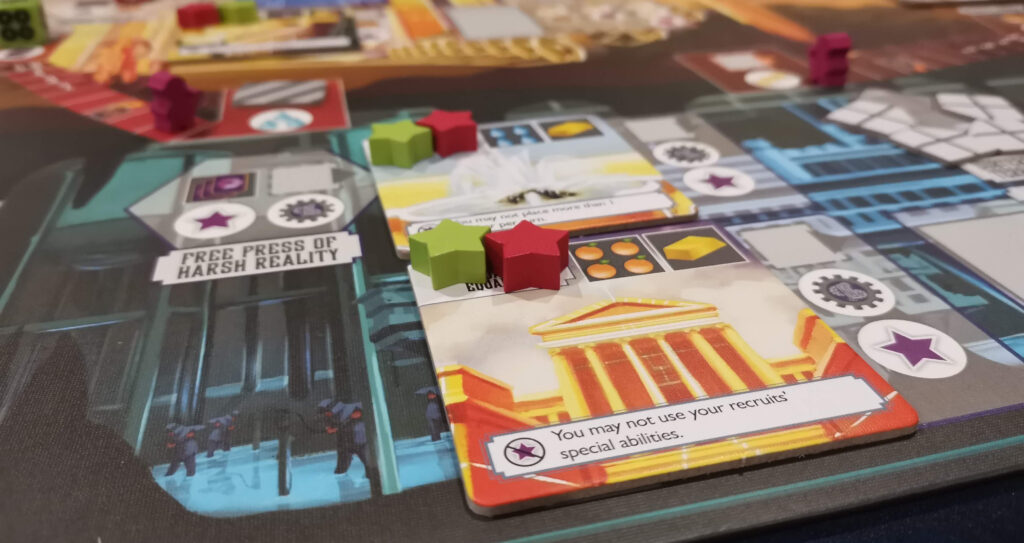
We’re Off To See The Wizard
Key in Euphoria are two different tracks that each player uses; morale and intelligence. They’re represented in the game by a heart and a head/brain respectively. Morale is important, as the number you have dictates the numbers of cards you can have in your hand, and you can also spend it in one of two methods to retrieve your workers from the board.
Intelligence brings a nice touch of push-your-luck to the game. If the value of your intelligence track, combined with the values of your freshly-rolled workers is 16 or higher, your highest value worker is taken from you, to be earned again later. Ouch. It’s not the end of the world, but now you might be working with two workers when your opponents have three or four, and when a game is a race – like this is – that’s bad news.
So, keep your workers happy and stupid – see what I meant about the humour?
Factions and Actions
There are four factions in the game, each represented by a distinct area on the board, the recruits that players draw at the start of the game, and four advancement tracks. Each area has a unique set of commodities and resources, which you can earn by placing workers in certain worker spots. The commodities can be spent on various things, including moving miners along a track in three of the four areas. The Icarites in their zeppelins at the top of the board don’t have a mine, as they spend their days floating above the world.
As you advance through the mines you dig out resources, which you can then spend on the construction of market spaces. Once enough workers are placed next to a market space, the tile gets flipped and a new worker spot is available. Anyone who helped build it gets to place a star on it (this is good, this is what we’re trying to do, remember?), but anyone who didn’t suffers the penalty written on the tile.
Some actions help advance the markers along the respective faction tracks, which give compound bonuses. If you manage to get one of these markers all the way to the end, anyone with an active recruit of that type gets to place a star next to it. Yay, another star gone.
Sorry Mate, I Didn’t See You There
On your turn, most of the time you’re placing a worker. You can only do that if you’ve got a worker, obviously, but how do you get your workers back from the board? Well, you can use a turn to withdraw some or all of your workers, but there’s also another nice mechanism at play in Euphoria.
In most worker-placement games, if someone claims a spot for one worker, no-one else can go there until they remove their worker. In this game, however, if the space has a dashed line around it (which most of them do), you can just place your worker there and bump the other worker off the spot. As with most things though it’s a case of swings and roundabouts. You can go pretty much wherever you want, whenever you want, which is good. But on the flipside, your opponent just got a worker back for free.
On Your Marks, Get Set…
As you might have guessed by now, what we’re trying to do in Euphoria is get those stars on the board as soon as possible. There are lots of ways to do it, but there’s the ever-present threat of your opponents doing the same. Luckily, there are a lot of places to put your stars down. In addition to the advancement tracks I mentioned before, and the markets, each area has its own territory. There are as many spaces in the territory as there are players in the game, but there’s no limit on how many each player can claim.
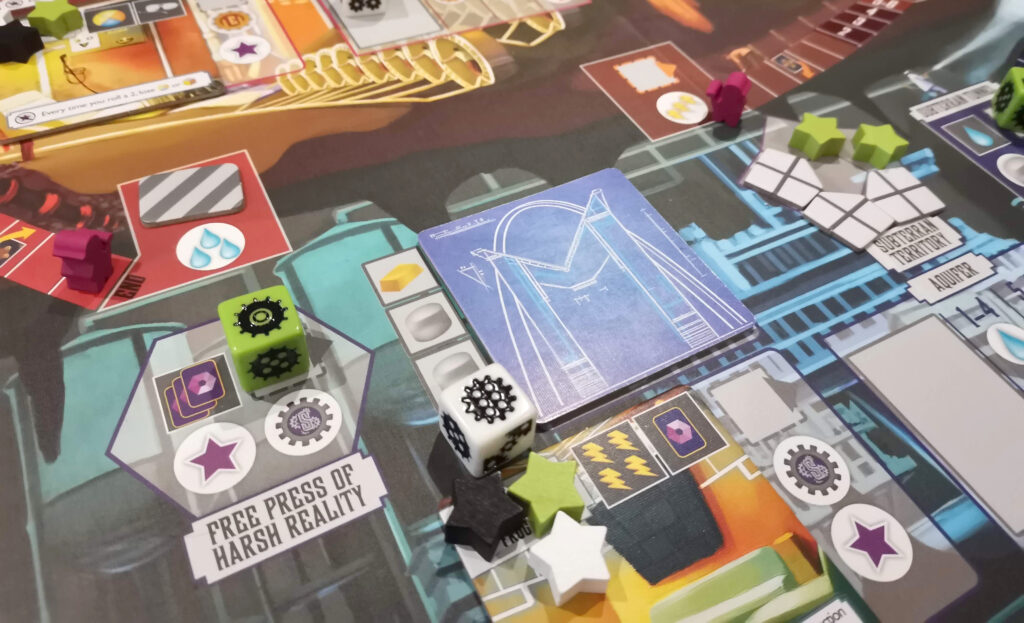
To claim these territory spaces, you need to use that faction’s artifact market. Trade in three cards (or two matching cards) and you can pop a star on the territory. I haven’t really mentioned the artifact cards yet, but they’re great, and make me laugh. They’re meant to be artifacts from the old times, and they’re things like baseball bats, broken spectacles, a knackered old teddy bear – that sort of thing. Junk right now, but ancient treasures in the future.
The final way to place a star is to resolve your ethical dilemma card. Each player gets one in secret at the start of the game, and by trading in artifacts on your turn you can flip the card and choose one of the two options. They represent things like getting married, for example; do you choose to marry your true love, or the person the state has chosen for you? Regardless of the dilemma, the results are the same. Choose to be a good drone and do what you’re told, and you get to place a star on the card. Follow your heart instead, and you get to draw two recruit cards and keep one of them.
Recruitment Drive
Recruit cards are the last piece of the puzzle. Everyone draws four at the start of the game and keeps two. One is face-up and represents the faction they’ll most likely try to advance, and the other is a big secret! Shhhhh. When a certain spot on the mine track or faction advancement track is reached, players with a matching secret faction card can flip them and gain their benefits too.
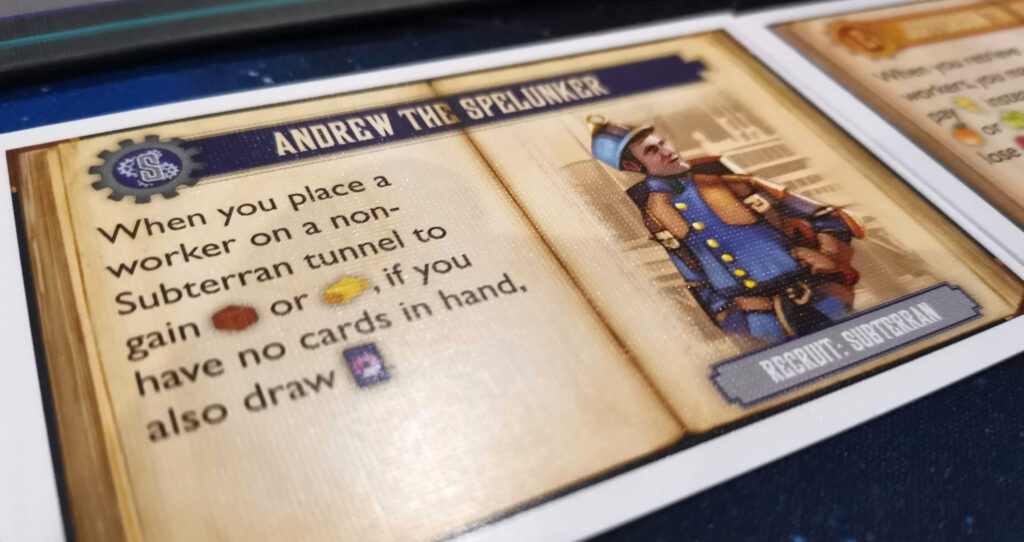
The benefits on the recruit cards do things like grant extra resources in certain places, let you pay fewer cards for some placements, things like that. I find they add an interesting dimension, because when they get flipped, all of a sudden players might suddenly have another faction they’re getting benefits from. Maybe even yours! The cads!
The game moves at a fair lick, and ends immediately when someone places their last star. No final rounds, none of that stuff, just bam! Game over. That player wins, everyone else doesn’t, and retires to lick their wounds and blame bad luck, or their horoscope, or the weather or something.
Final Thoughts
While I was waiting for the game to arrive, I started my usual overthinking. “What if it shows its age? What if I’ve played something else that does it all better? Why don’t more people rave about it?” It turns out that I needn’t have worried, Euphoria is great.
Regular readers will know that I love worker-placement, and I really like dice too. I’ve played a few dice-as-workers games, all newer than this one, but I’ve not played one that does things the same way. And I can’t remember the last reasonably heavy game I played that felt like an honest-to-goodness race.
Theme
Theme isn’t that big a deal to me, I love a dry, beige game. But Euphoria has tons of theme, and everything in the game both uses and enhances that theme, The feeling of this dystopia that’s almost comical in its absurdity, is great. Keep your workers happy, but keep them stupid, or the cleverest one does a runner – that’s clever, not just functional.
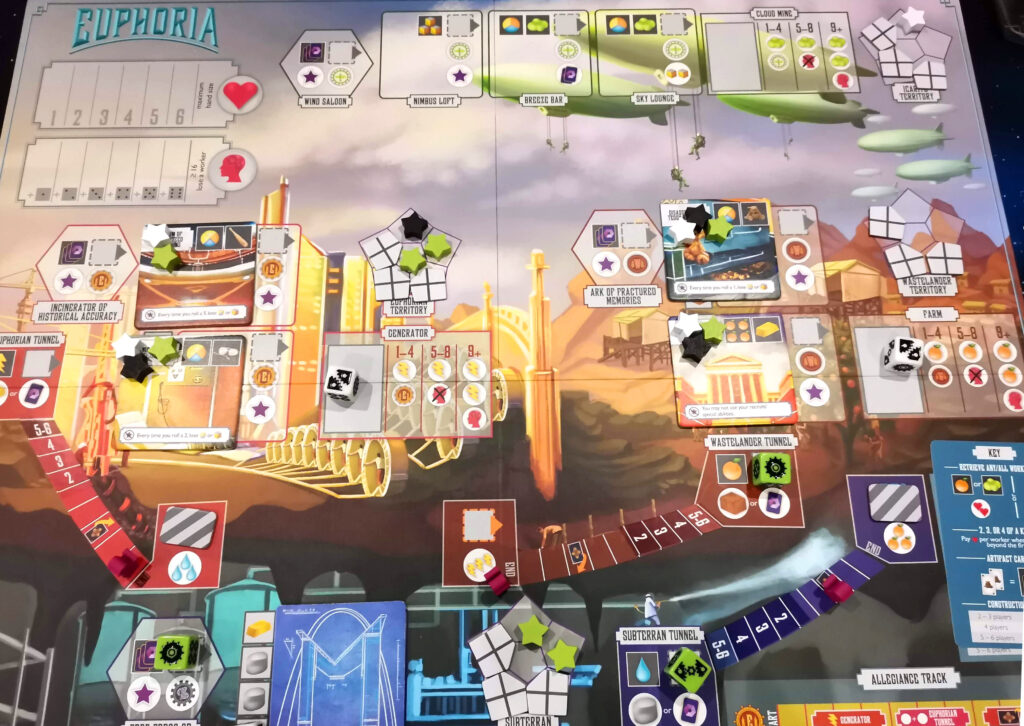
The art really lends to the feel too, and because everything feels so nice to touch, it really adds to the overall experience and table presence. The black humour throughout lends to the dystopian feel. Maybe that theme doesn’t sing to everyone, but it’s a nice change to the usual barrage of historical cityscapes and deep space we get in most Euro games.
Off To The Races
My favourite thing about Euphoria is the feeling of being in a race. I know it’s there in some games, but it feels so pronounced here. Everything starts nice and slow; get a few resources, do a thing, maybe get a star or two. But then suddenly things start accelerating, and then game starts careening like a train out of control. You end up with one eye on your board, and one on each of your opponents stars. You find yourself making sure you always knowing how many the other players have left. For those last few stars you’ll find yourself doing some fast mental maths, as turns go by really quickly.
On top of that,there’s the surprise as you move into the last third of the game and hidden recruits get revealed. All of a sudden, that person sat next to you has a reason to start using all the places you want, and they get a discount for using your artifact market? They can definitely get their own drink for the rest of games night.
Then people start taking risks. You might have three workers all out on the board, and you really want them all back, because the game is balanced on a knife-edge. Your intelligence track is on 3, and you know if you take them all back, you have to roll them all. The mental maths starts again – “So I can’t go over thirteen on this roll, or I lose a worker. I can roll under thirteen on three dice, right? Right??” You take the risk, roll the dice, and the collective table holds its breath… It’s moments like that, that really make Euphoria stand out.
Expanding Horizons
I think the Ignorance is Bliss expansion is a must, if you’re considering Euphoria. The game balance fixes are great, and it includes as many new market tiles and recruit cards as were already in the base game. The player mats, they aren’t essential maybe, but being able to track your morale and intelligence on your own board, instead of reaching across the board to the shared track, is another small win. The artifact market adds another nice little twist to keep things fresh after 20 or 30 plays.
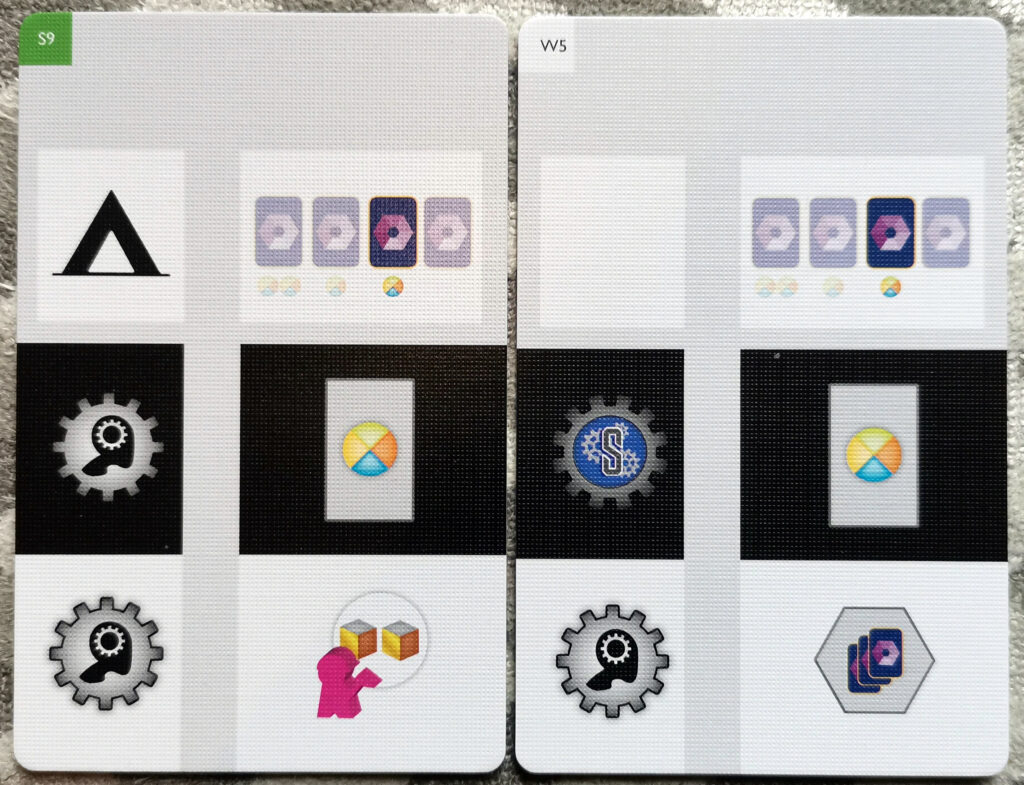
The real star of the show in that small, green box though, is the automa deck. It works the same as all Automa Factory AI systems seem to: a two cards decide the action and the target for that action. Because the automa don’t take or spend resources, their turns are quick and smooth, and the iconography is really clear and simple. Interestingly, this automa has you running two opponents – black and white, but that shouldn’t be a red flag, it’s very simple. It’s also a big hint that this is a game meant to be played with more than two players.
Should I Buy This Game?
If the theme doesn’t turn you off, and you want a worker-placement game that does things a little differently, then yes – you should buy Euphoria. I find it’s all too easy to get swept up in the Cult Of The New and dismiss anything older than a year, but there are still a lot of incredible games that would be old enough to be in school now. Euphoria: Build a Better Utopia is one such game.
Having said that, I’ll still caveat it by saying I think the Ignorance is Bliss expansion is essential. Not just because the fixes make the game feel more balanced, but because a) the solo mode is very good, and b) because the automa deck lets you play a 4-player game with two people. The reason I mention that specifically, is because although it’s a good game with two with 3+ it really comes alive. The competition for spaces, the tension of the race, it’s just so much more pronounced with more players, and that’s what makes this game shine for me. The first game is a learning one, but every game after that is great fun, and that’s exactly what this game delivers – fun.
If you want to try it out before you buy it, you can play it right now over on Tabletopia.
Review copy provided by Stonemaier Games. Thoughts and opinions are my own.
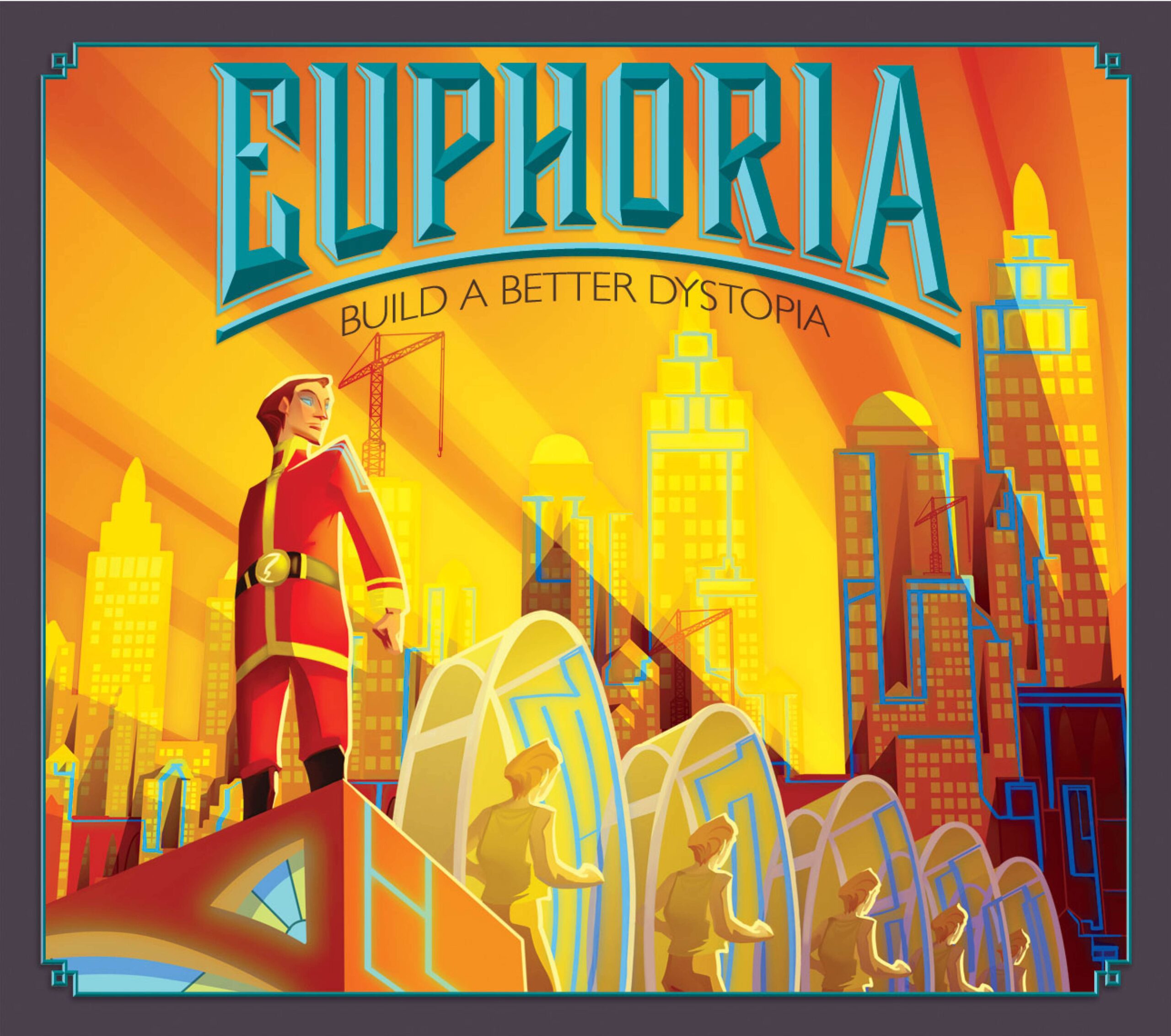
Great thorough review!
Thanks Gavin, much appreciated 🙂